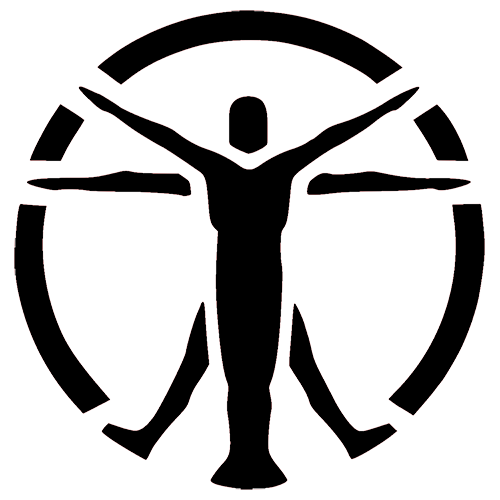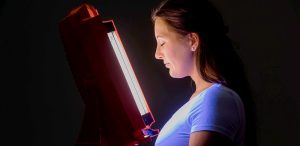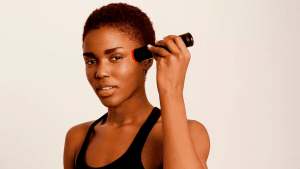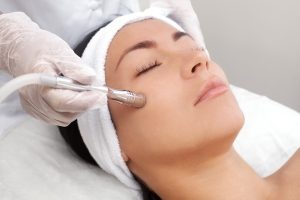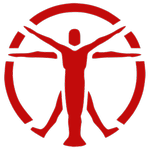Very often our skin encounters many factors that hurt it. Although textured skin occurs in at least a third of the population (which makes this phenomenon quite common), greasy, hyperpigmented, or aging skin can cause psychological suffering. This defect makes you feel shy and anxious, seriously affects your body image and self-esteem, or might indicate more serious health problems.
There are many different ways of improving textured skin, including proper daily care routine, treatment with ointments and antibiotics, and various cosmetological strategies. LED light therapy is considered nowadays among the most effective treatments, it suits patients of all ages and can be used on all skin types.
In this article, we explore what reasons for textured skin exist and how to deal with it. We have uncovered information about 5 methods of improving skin texture and tips to prevent it recommended by doctors. We have also reviewed some studies which show how effective LED light therapy is, one of the most popular treatments for bad skin.
What is textured skin?
Saying about textured skin, cosmetologists often keep in mind oily skin, prone to acne. In oily skin, the formation of sebum significantly increases, and its composition changes, leading to clogged pores and blackheads. Dry skin is referred to textured skin too. This skin type lacks lipids, which help to retain moisture and form a protective barrier against external influences.
But in a more broad sense skin texture refers to any of our skin’s surface conditions which one can`t describe as normal skin, textured skin manifests itself in different ways.

Textured skin signs include:
- The increased greasiness of the skin;
- Inflammatory rashes (acne or blackheads);
- Excessive dryness of the skin;
- Redness and allergic manifestations;
- Eczema (red, itchy, scaly, and inflamed skin);
- Couperose — the appearance of a pronounced vascular network and asterisks;
- Uneven skin tone;
- Hyperpigmentation;
- Skin aging, deep wrinkles, age spots.
Causes of textured skin
Several factors contribute to textured skin and identifying them is the first step to reducing undesirable signs of it.
Genetics
Increased melanin synthesis or sebum secretion may result from a genetic predisposition, and changing this individual trait is impossible.
Hormonal fluctuations
Most often, acne is caused by hormonal changes that occur during puberty (mostly due to androgens), before menstruation, and during pregnancy in women. These changes or hormonal imbalances after a disease can also provoke pigmentation.

Drug treatment
Taking certain medications, in particular, corticosteroids also can be the factor that provokes acne. Some medications can increase the skin’s sensitivity to ultraviolet light.
Stress
Stress increases cortisol production in the skin which provokes hyperplasia of the sebaceous glands. They begin to produce more sebum, which leads to clogged pores and acne. In addition, it has been proven that an excess of cortisol reduces the barrier functions of the skin [1].
Cortisol also negatively affects the aging process in general. Collagen is destroyed, skin elasticity decreases in cells, ptosis and wrinkles appear.
Unhealthy lifestyle
It was revealed that foods with a significant content of sugar and other carbohydrates affect the concentration of insulin, increasing the level of glycemic load. This leads to hypersecretion of sebum and acne [2, 3]. Similar results have been received for alcohol and smoking [4].

Exposure to harsh environments
Pigmented spots are provoked by aggressive exposure to sunlight or other sources of ultraviolet radiation. Such factors as wind, arid climate, pollution also make skin dry and itchy.
Wrong skincare routine
Heavy skincare or makeup products can cause irritation, formation of acne and thus contribute to textured skin formation. Insufficient exfoliation of the skin can lead to the development of uneven skin tone.
5 best ways to treat textured skin
LED light therapy
LED light therapy is an effective treatment for acne, aging skin, pigmentation, rosacea, and other skin conditions. Unlike most of the procedures listed below, it causes no inflammation and requires no special post-treatment and this is a non-invasive procedure. LEDs don’t contain ultraviolet rays so they are safe for regular use.
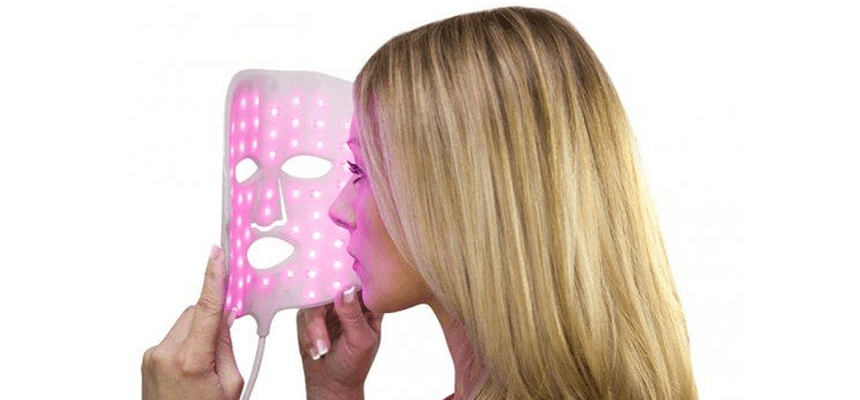
With light therapy, skin is treated with red or blue light (can be used both), or some other color. Cells react to light in different ways, depending on which wavelength hits the skin. In contrast to laser resurfacing, intense pulsed light (IPL), or other skin rejuvenation strategies that induce tissue repair by causing controlled damage to the epidermis or the dermis, light therapy is atraumatic, no inflammation or prolonged social downtime is known in this treatment.
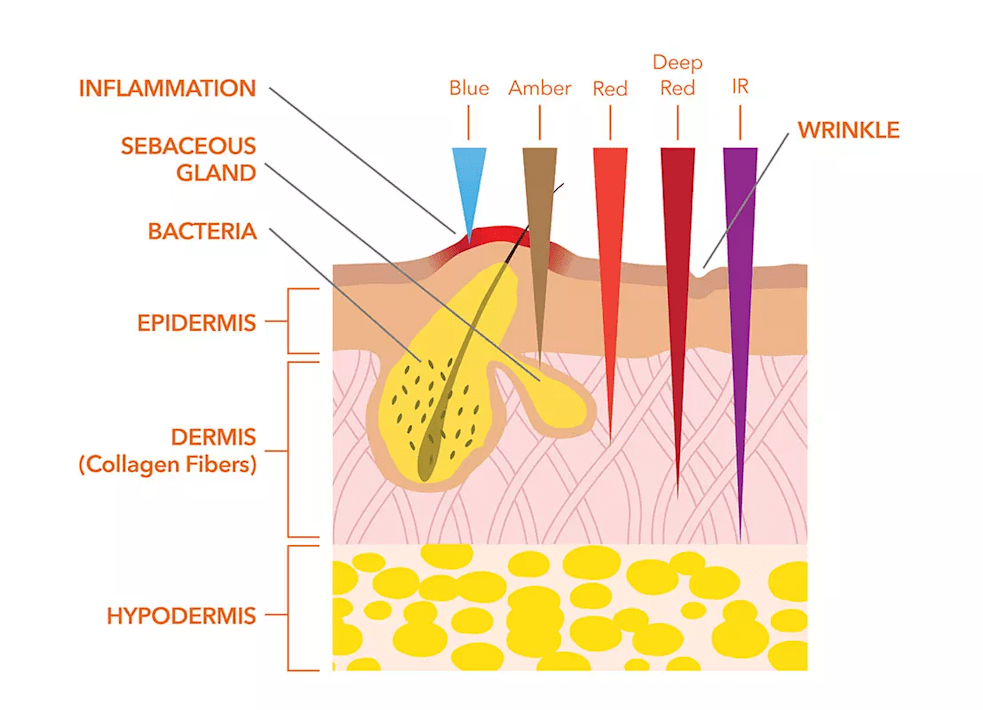
🔵 For inflammation, mostly blue light (400-510 nm), or a combination of blue and red light, is used. It acts against one of the most common causes of acne — the bacterium Propionibacterium acnes. Blue light is great for oily and problem skin with enlarged pores, comedones, and frequent inflammation. Exposure to blue light normalizes sebum production, reduces acne, and restores skin moisture balance.

🔴 Red light (630-660 nm) is used for anti-aging care, it acts against pigmentation and wrinkles. It penetrates the layers of the skin to a depth of 4-5 mm, where fibroblasts are responsible for the production of collagen and elastin. In addition, red light improves blood circulation, thereby saturating cells with oxygen and nutrients, and speeds up metabolic processes. This treatment is perfect for mature or dehydrated skin, it softens fine lines and wrinkles.

🟢The green light (515-520 nm) of LED lamps helps against pigmentation and premature aging of the skin. Compared to red and blue light, the effects of green bulbs are not well researched, but there is already evidence that they can lighten freckles and spots caused by prolonged exposure to the sun, remove redness, and even out skin tone.
Mechanical and ultrasonic face cleaning
Professional facial cleansing removes impurities, exfoliates the dead epidermis, helps to eliminate comedones and inflammatory elements. This procedure enhances metabolic processes and blood circulation normalizes the functioning of the sebaceous glands of the skin. Regular facial cleansing helps to improve a skin condition, it tones, moisturizes, rejuvenates, and nourishes the skin.
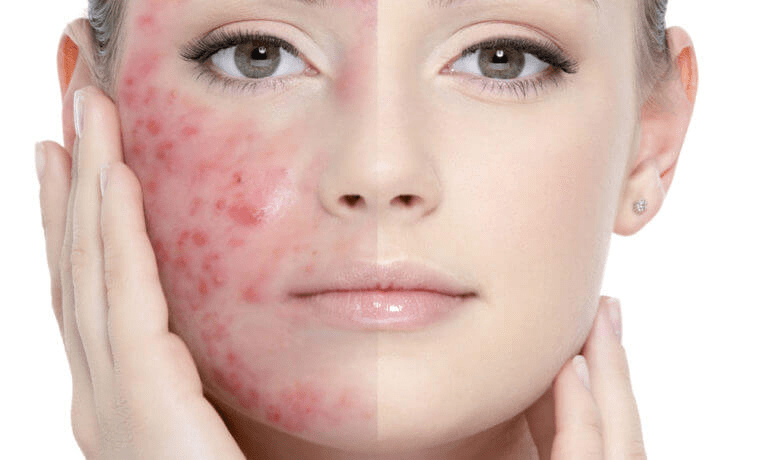
Topical therapeutic agents
Regular washes with gentle antibacterial agents are indicated in a mild rash. In more severe cases of problem skin, topicals with medicinal additives are used, such as keratolytics. They include tretinoin, α-hydroxy acids (mainly glycolic acid), benzoyl peroxide, salicylic acid, urea.
Such agents as vitamins, retinol, peptides, and growth factors (GF), which can be used as anti-aging cream components, directly affect collagen metabolism and influence collagen production.
Antibiotics and other medicines
Systemic therapy is indicated for patients with moderate to severe acne, especially in the case of scarring. The demand for antibiotics in the treatment of acne is explained by the fact that these drugs, both for topical and systemic use, lead to a decrease in the colonization of Propionibacterium acnes, a bacterium that causes acne on the skin, as well as nonspecific pathogenic flora (streptococci, staphylococci, Escherichia coli, etc.). Monocomponent antibiotics (tetracyclines, macrolides, lincosamides) are currently used for topical treatment. For mild to moderate processes and cystic-nodular forms of acne, clindamycin and erythromycin are most often prescribed.
In case of rashes of hormonal nature in adult women, a special course of therapy with oral contraceptives can be prescribed, such treatment is strictly prescribed by the doctor.

Cosmetological strategies
Such procedures as chemical peels, microdermabrasion remove the outer layers of skin, allow to reveal a brighter skin color, texture, and tone and lessen the appearance of wrinkles or pigmentation. During these procedures, the epidermis is completely or partially removed, followed by its regeneration.
In laser resurfacing the laser light penetrates up to 6 mm in the skin. This technology has a bactericidal effect, allows to normalize microcirculation in the inflammation zone and due to the improved circulation, trophic processes in the tissues are stimulated. During the procedure, there is an effect on the sebaceous glands, which helps to reduce the production of sebum.
Similarly, during the procedure of radiofrequency, the local blood supply and lymph flow improves, and the vessel tone increases.
In IPL (Intense Pulsed Light) the source of broadband intense pulsed light is a xenon lamp. The flashes of this lamp provide a light effect on the skin, which allows you to obtain a certain effect: skin rejuvenation, treatment of some textured skin signs, including acne, removal of unwanted hair, or pigmentation.
How does light therapy help textured skin?
Light therapy has managed to undergo a large number of clinical trials and proved its effectiveness, particularly for wound healing and human tissue growth [5, 6, 7].
In this study [8] patients with mild to moderate acne were treated with a blue light hand-held device. Four treatments were conducted twice daily in the clinic and signs of improvement were observed after 2 treatments already. This study showed the effectiveness of using the blue light application daily for faster resolution of inflammatory acne lesions, time to resolution was significantly shorter for the blue light therapy as opposed to the placebo.
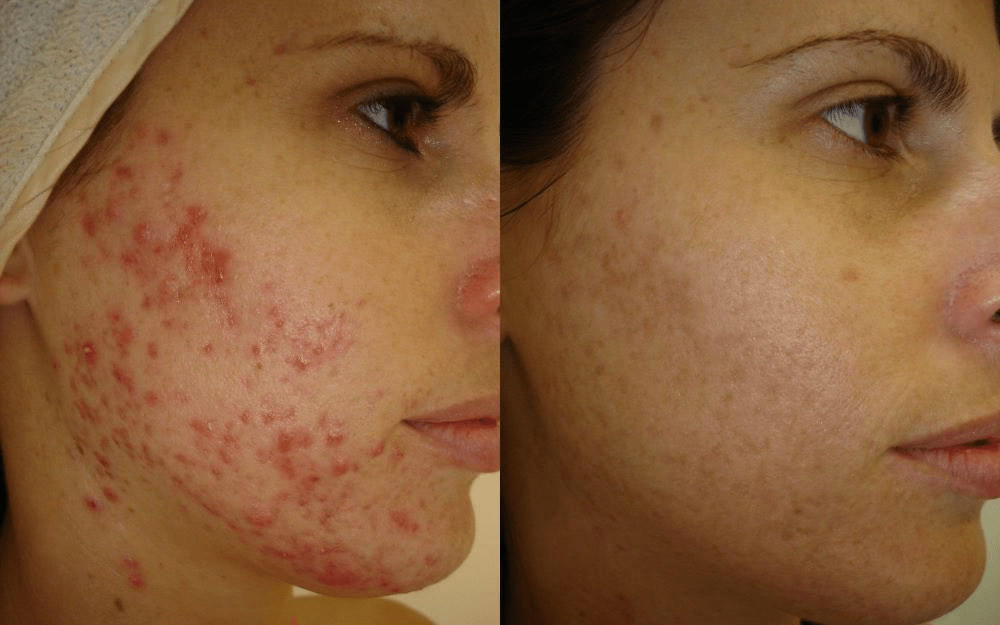
Another study [9] confirms that blue light phototherapy appears to be a safe and effective additional therapy for mild to moderate acne. Over 4 weeks, patients received eight light treatments that lasted for 10 or 20 minutes. Assessments were taken at weeks 5, 8, and 12. As a result, the onset of the effect was observable at the 5th week, and the maximal result was noticed between weeks 8 and 12. The treatment was well-tolerated, adverse events were mild and usually self‐limiting. The treatment had little effect on the number of comedones.
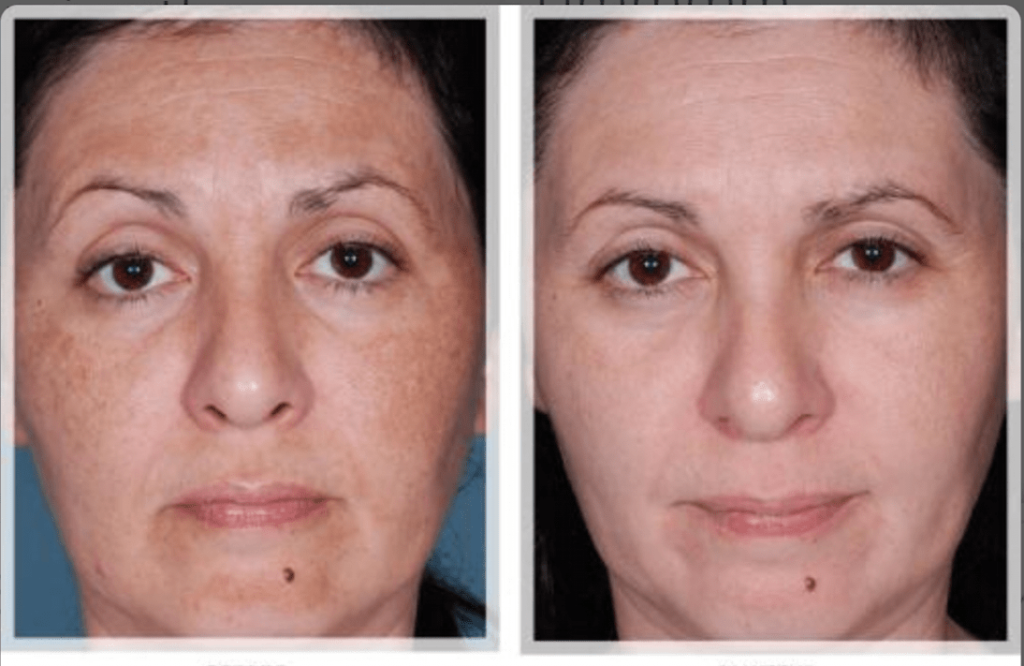
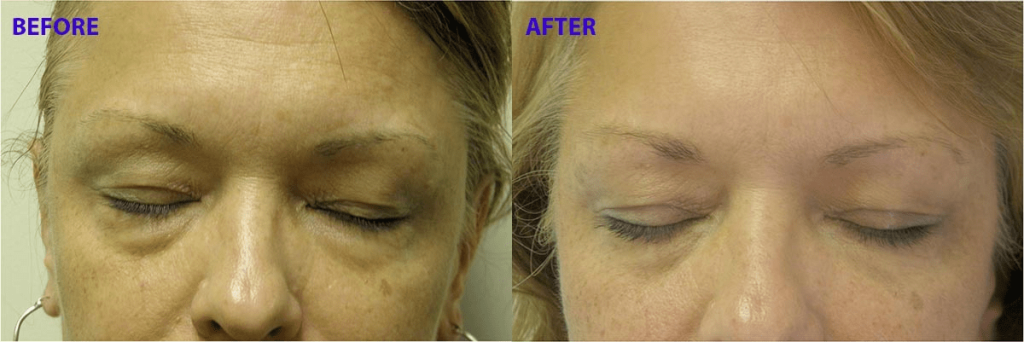
Also, combination red and near-infrared LED light therapy is an effective method of photorejuvenation. A study [10] involved 31 subjects with facial rhytids (wrinkles) receiving 9 light therapy treatments which combined wavelengths of 633 nm and 830 nm. Improvements to the skin surface were evaluated at weeks 9 and 12 by profilometry. The study showed that 52% of subjects showed a 25%–50% improvement in photoaging scores by week 12; 81% of subjects reported a significant improvement in periorbital wrinkles on completion of follow‐up.
Find out light-therapy-based devices that effectively deal with aging skin.
How to get rid of textured skin?
- First of all, consult a dermatologist to rule out any medical conditions;
- Reduce the consumption of spicy, fried, and salty foods, include in your diet foods containing vitamins and vegetable fiber, drink more water;
- Avoid intense exposure to sunlight;
- Choose products with your skin type in mind. Do not use creams and cosmetics containing heavy oils;
- Stick to a regular skincare routine. Make sure you don’t miss the stages of cleansing, moisturization, and nutrition of your face in routine care.
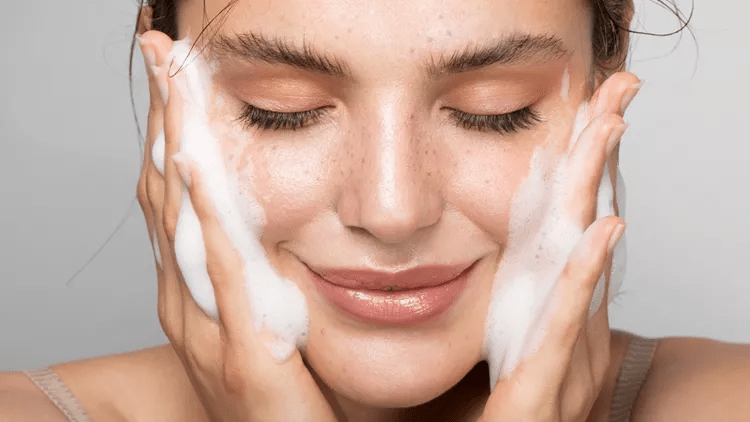
Summary
No matter what your skin type, no matter what your age, well-chosen treatment makes it easy to keep your skin shine and glow. LED light therapy studies show promising results in treating some skin conditions, this treatment is non-invasive, safe, and suits all skin types. With light therapy, you can expect to slow down fine lines and wrinkles, reduce acne, improve skin tone and texture, and much more.
FAQ
🤔 What causes textured skin?
In many cases textured skin is the result of the following:
– Genetics;
– Hormonal changes and imbalances;
– Improper skincare;
– Drug treatment;
– Stress;
– Unhealthy lifestyle;
– Exposure to harsh environments.
👨⚕️ How to get rid of textured skin?
Below is a list of tips for improving skin texture recommended by dermatologists:
– Avoiding intense exposure to sunlight;
– Proper routine care;
– Topical medicines (ointments);
– Antibiotics and other medicines;
– Cosmetic procedures;
– LED light therapy.
LED light therapy is considered nowadays the most effective treatment of textured skin.
👉 What are light therapy benefits?
It applies to all skin types at any time of the year; Does not require anesthesia; Non-invasiveness of the procedure; No side effects; No rehabilitation period; Persistent preservation of the effect (more than a year); The possibility of using both light therapy alone and in combination with other methods.
📌 How is a lightwave session going?
The body is exposed to light with a special LED panel, or a mask with LED’s on the inner surface can be used on a face. The procedure takes about 20-40 minutes. You should protect your skin from ultraviolet radiation with at least SPF-30 products after a procedure.
Sources
- Choe, S.J., Kim, D., Kim, E.J. et al. Psychological Stress Deteriorates Skin Barrier Function by Activating 11β-Hydroxysteroid Dehydrogenase 1 and the HPA Axis. — Sci Rep. 2018 Apr 20;8(1):6334. DOI: 10.1038/s41598-018-24653-z
- Veith WB, Silverberg NB. The association of acne vulgaris with diet. — Cutis. 2011 Aug;88(2):84-91.
- Melnik B.C., Schmitz G. Role of insulin, insulin-like growth factor–1, hyperglycaemic food and milk consumption in the pathogenesis of acne vulgaris. — Exp Dermatol. 2009 Oct;18(10):833-41. DOI: 10.1111/j.1600-0625.2009.00924.x.
- Capitanio B., Sinagra J.L., Ottaviani M. et al. Acne, and smoking. — Dermatoendocrinol. 2009 May;1(3):129-35. DOI: 10.4161/derm.1.3.9638.
- Gupta A.K., Filonenko N., Salansky N., and Sauder D.N. The use of low energy photon therapy (LEPT) in venous leg ulcers: a double-blind, placebo-controlled study. — Dermatol Surg. 1998 Dec;24(12):1383-6. DOI: 10.1111/j.1524-4725.1998.tb00019.x.
- Barolet D., Roberge C.J., Auger F.A., Boucher A., and Germain L. Regulation of skin collagen metabolism in vitro using a pulsed 660 nm LED light source: clinical correlation with a single-blinded study. — J Invest Dermatol. 2009 Aug;129(12):2751-9. DOI: 10.1038/jid.2009.186.
- Hu D, Zhu S, Potas JR. Red LED photobiomodulation reduces pain hypersensitivity and improves sensorimotor function following mild T10 hemicontusion spinal cord injury. — J Neuroinflammation. 2016 Aug 26;13(1):200. DOI:10.1186/s12974-016-0679-3.
- Michael H. Gold, Whitney Sensing & Julie A. Biron. Clinical efficacy of home-use blue-light therapy for mild-to-moderate acne. — J Cosmet Laser Ther. 2011 Dec;13(6):308-14. DOI: 10.3109/14764172.2011.630081
- C. A. Morton, R. D. Scholefield, C. Whitehurst & J. Birch. An open study to determine the efficacy of blue light in the treatment of mild to moderate acne. — J Dermatolog Treat. 2005 Feb;16(4):219-23. DOI: 10.1080/09546630500283664
- B. A. Russell, N. Kellett & L. R. Reilly. A study to determine the efficacy of combination LED light therapy (633 nm and 830 nm) in facial skin rejuvenation. — J Cosmet Laser Ther. 2005 Dec;7(3-4):196-200. DOI: 10.1080/14764170500370059
